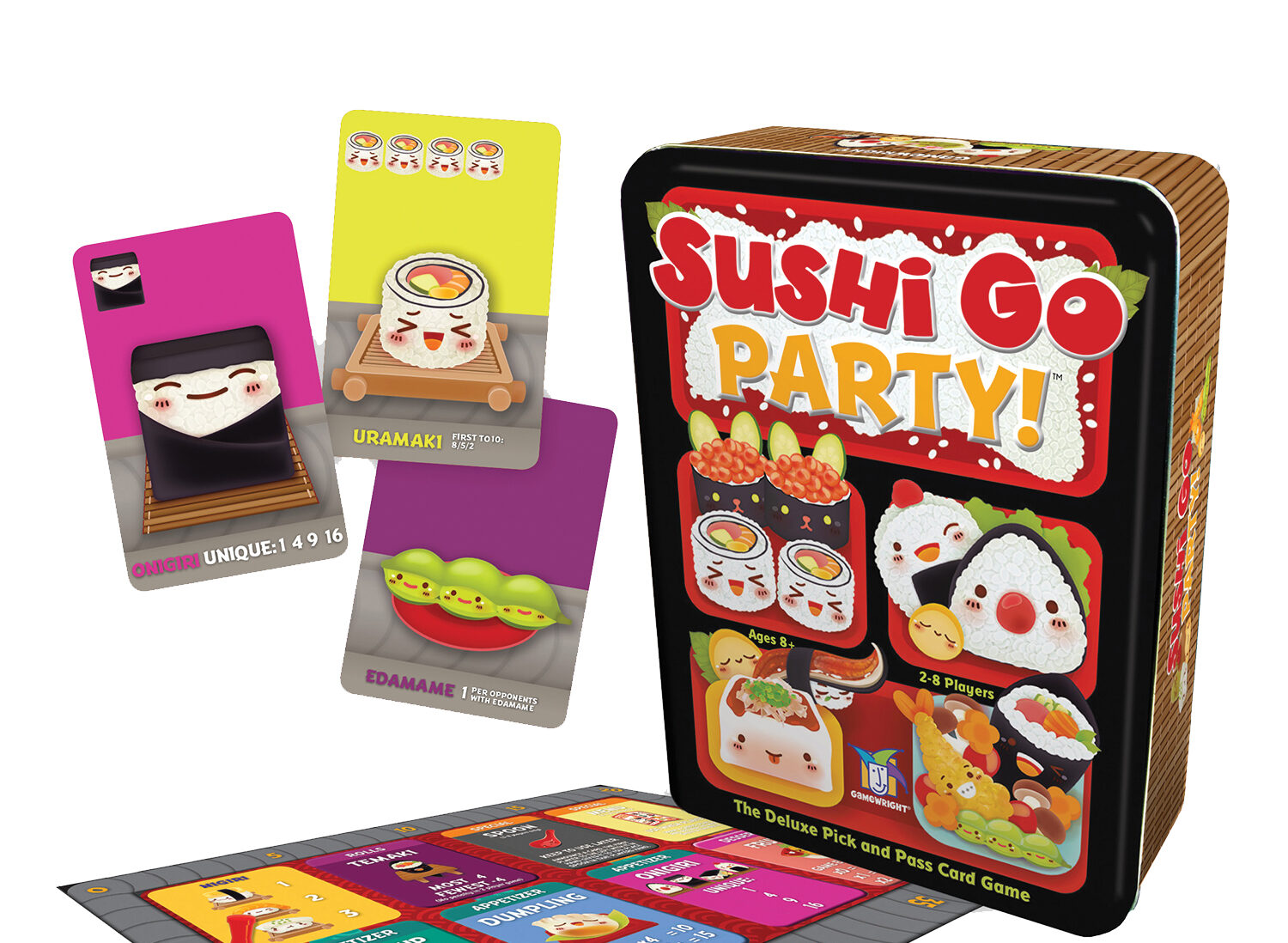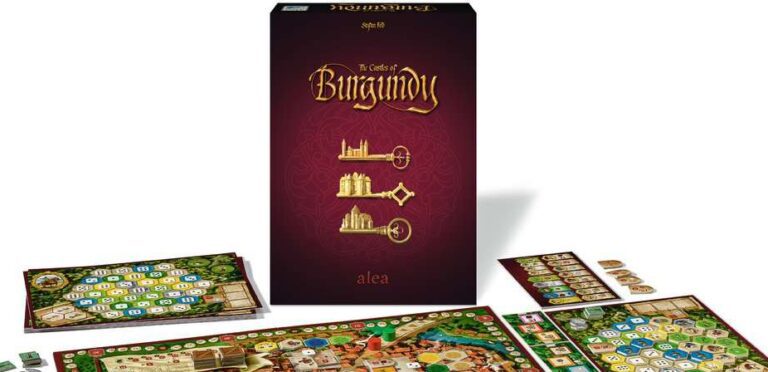Introduction
Artistically adorable, highly replayable and perfect both for an evening with friends and family, Sushi Go Party! is an entertaining tabletop title released in 2016 for two to eight players to enjoy. Participants compete with one another by preparing tasty and eye-catching sushi menus so they can achieve the highest possible score.
The main mechanic the game relies upon is “drafting” food cards, which consists in repeatedly selecting one card from a given hand and passing the remainder to the player next to you, thus forming a menu with which players score points.
A game of Sushi Go Party lasts for around twenty minutes, yet it is rare to just play one game.
What does Sushi Go Party include?
For a board game that comes in a rather small format, Sushi Go Party is packed with a surprising amount of material.
Inside its metal box there is space for 181 cards, a player board where the menu tile conditions for a specific game are put, 22 food tiles, a rulebook and 8 player pawns which represent soy sauce bottles; all of this within a magnificent plastic insert which dramatically eases setting the game up.
If there is any complaint to make it is the fact that Sushi Go´s box is better placed horizontally instead of vertically, though few will find this a nuisance.
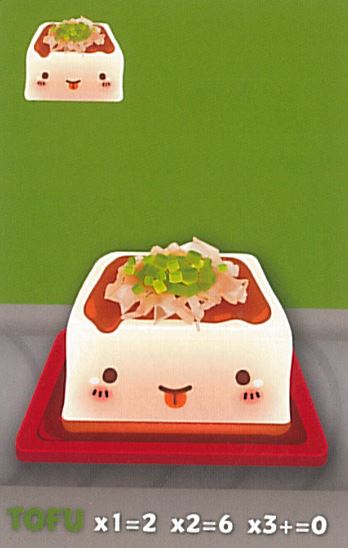

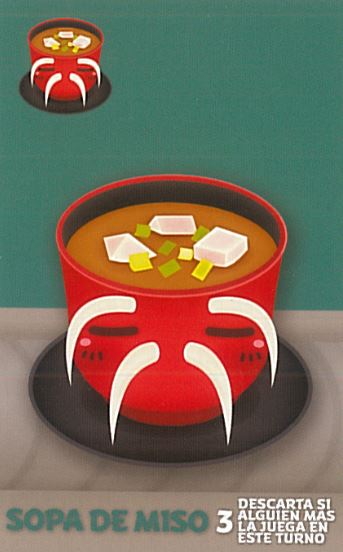

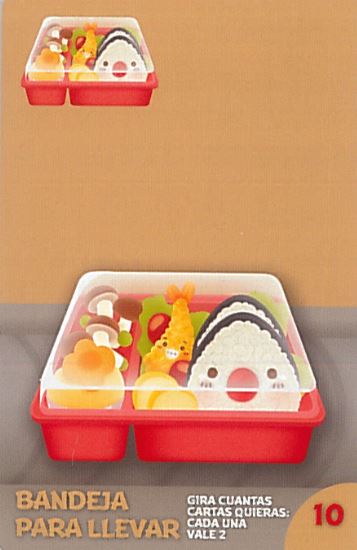

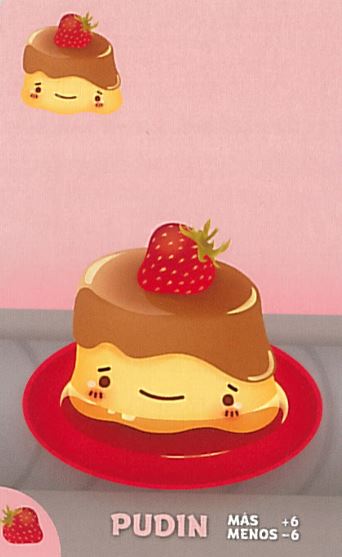

How do you play Sushi Go Party?
Though a very easy game, we recommend a thorough reading of the manual before beginning actual play. This section is meant to serve as a brief explanation of how the game works.
Sushi Go Party is very simple and it can be learnt in a matter of minutes.
Before anything happens, a menu is selected, choosing a set of tiles from the sushi roll, special, appetizer and dessert food categories. Nigiris are always added regardless of everything else. Combinations for the menu can be chosen randomly or by consulting the manual, which comes with preselected menu scenarios.
The participants are then given a hand of cards, ranging from seven to ten each, depending on their number.
The first round out of three begins. Participants examine their options and choose the card they have an interest in keeping. Their minds made up, they simultaneously reveal their cards on the table and pass their respective remaining hand to the player next to them, usually in a clockwise manner. If there are any, the effect of the food cards on the table go off.
By the end of each round the score is updated, and each player´s soy pawn moves along the point track. All played cards bar desserts are collected, re-shuffled and mixed with the newly added dessert cards.
The process of giving and choosing cards resumes next round, and by the end of the third the player that scores the most wins the game.
Experience and strategies for Sushi Go Party
Out of its lack of complexity Sushi Go Party displays its greatest strength.
In bare essence the game is just about choosing a card and passing down the rest, yet it is when designing and strategically crafting a beautiful menu where Sushi Go shines as fun a party game.
All players must be attentive of what others are choosing so they can infer what their optimal food path is, and nevertheless there will always be situations where participants struggle with one another because they wish for the same food card.
The practically infinite amount of combinations for choosing the menu turns Sushi Go Party into a highly replayable title, as the dynamics of each game can diverge a lot by replacing just a single food category.
According to the calculations of user “D Raj” in the BGG forum, there are around 14112 total menu combinations to choose from, thereby existing more game scenarios than time to actually play them.
Most food cards from each category are not very different between them, particularly when it comes to the appetizers, but they all change the way a game must be approached. However, true variety comes with the introduction of the special food category, where we find cards that interact the most with the rest of players, and which are sure to guarantee chaos on the board. Some cards allow for the duplication of others or even allow choosing two instead of one.
Desserts, for their part, will regularly be passed around the first few rounds of a game, seeing as they only score in the last one. Although, unlike other food types, desserts are not retired, so they can score a lot of points for the prescient and prepared player.
One of the most compelling things about Sushi Go Party´s design is that it does not possess a clear winning strategy despite the presence of cards which clearly hand out more benefits than others; this is due to the fact that players can take them, punitively depriving the rest from doing so, and because there is a recurring presence of high risk-high reward tactics.
On top of this, each player begins at zero every round, so the first few chosen cards will be the ones that delineate the general strategy of choice for participants. Sabotage in the early stages is simply not viable.
Since there always are spare cards in a deck, one is also never sure of the exact number of card types in any given round. Therefore, the only correct way of playing Sushi Go is through constant adaptability and improvisation, examining the board state while avoiding the creation of a menu that is very similar to the one used by another player.
Tip: pay special attention to the players on your right, as they have priority over you when choosing a food card.
Final verdict for Sushi Go Party
At the current moment, Sushi Go Party is without question one of the best tabletop games that can be purchased if the buyer intends to play it with non tabletop veteran friends or with family members.
Accessible and easy to both explain and learn, turns are fast and participants are always doing something. Idle time does not exist save for players laughing or taking a few moments when picking a card.
The amount of combinations possible and the speed at which the game can be set up make for something that can be easily brought out to the table. Quite surely, nobody is going to say no to a quick game of Sushi Go if they have already played it.
The materials the game is made out of are of good quality, although we recommend the cards be sleeved as to extend their lifetime and protect them from potential accidents.
The art of Sushi Go is distinctive and fun, making it very appropriate for play with children. The box and the plastic inserts are also well done despite the metal casing being easy to dent when applying some force to it, and cards will move around when the box is placed vertically.
In conclusion, Sushi Go Party is an affordable and indispensable classic for gaming groups which enjoy quick games paired with some slight friendly teasing.
For the price it has, it most certainly is worth a buy.
Also available in:





